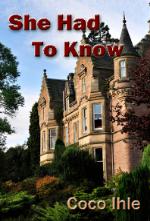Years ago I was driving with my family throughout England, Scotland and Wales. I had spent a year mapping out an itinerary that would include a variety of interesting places and things to do for our three-generation group. Our accommodations varied, too. We stayed in bed and breakfast hotels and homes, historic manor homes and castles, traveling just before the tourist season to avoid the crowds.
I was excited as we drove through the ancient entrance gates of Castell Rhuthun, more commonly known as Ruthin Castle in northern Wales, because this romantic getaway set on acres of scenic parkland had over seven hundred years of tantalizing history, with such notable owners as King Edward I, Henry VIII and Elizabeth I. According to Arthurian legend, when there would have been no more than a wooden fort on the site, King Arthur disguised himself for a romantic liaison with his mistress at Ruthin. In later years, Reginald de Grey, who according to some, was formerly the Sheriff of Nottingham was tasked with forming the “finest army in the land” to defeat the followers of Robin Hood in Sherwood Forest. Ruthin is even said to be haunted by the “Grey Lady.” Only a few years before our trip there, HRH Prince Charles visited on his way to his investiture as Prince of Wales. This was definitely a place to see.
We settled in our rooms and then prepared ourselves for the Mediaeval Banquet we would be attending that evening. Joining other guests, we started with a tour of the 13th century part of the castle: the dungeon, whipping pit and the drowning pool and then gathered in the Presence Chamber to await the Court Steward and the Ladies of the Court, all dressed in period costumes. After experiencing the hospitality ritual of the partaking of bread and salt, we were escorted into the lofty, candle-lit Banquet Hall.
Here the romance and color of those early times were revived as guests joined together in the lively atmosphere with harp music and singing, in Welch and in English, a song of welcome, “Hi roes, lechyd da” ( Long life and good health). We were served thick vegetable soup in wooden bowls which we held to our mouths, since we had no silverware. Next was a course of lamb and potatoes that we ate with daggers followed by a leg of chicken. Mead, a drink made of fermented apples and honey definitely enhanced the mood and was very, very good. For some reason, I can’t remember what the dessert was. The whole evening was enchanted.
I was sad when the banquet was over and we had to return to the 20thcentury, but there was a plush feather bed to look forward to. I slept soundly and arose early next day to shower and set and dry my hair in rollers.A gentle mist hovered over the expansive lawns and I eased open the casement window to feel the chill morning air. All was quiet and still, but the day promised to be sunny and calm and I was lost in the memory of the evening before. Dreamily, I went about my hair dressing.
My reverie was suddenly broken by a sound so startling I was momentarily frozen in place. It was only one word, but it pierced the stillness in a high-pitched shriek. Where had the sound come from? I wasn’t sure. The castle room was large and the sound echoed throughout. I listened, afraid to breathe. Long silent seconds passed and I wondered if I had actually heard it? Was I imagining the sound? Would it repeat?
Just about the time I convinced myself I had an over-active imagination, there it was again. “HELP!” Someone was shouting, “HELP.” Had my family heard it? No. I didn’t know what to do. Should I wake them? I glanced out the window, but saw nothing. Maybe someone was hurt or in trouble in the hallway. I rushed to open the door. The hallway was empty. What was happening? My feeling of panic grew.
“HELP!” Now I was certain the sound had come from outside. I rushed to the window again and leaned out as far as was safe. My eyes darted here, there and everywhere.
Then I saw it. The shrill cry rang out again. At the far side of the castle lawn against a rock wall, a white peacock strolled with feathers spread in all their glory.
I was so relieved, I didn’t know if I should cry or laugh. I was a wreck. That was the first time I had ever heard a peacock make any kind of sound. I couldn’t believe it sounded exactly like someone crying, “Help.” Now, as my heart began its return to a more normal beat, I felt embarrassed. I decided I wouldn’t tell anyone about my early morning scare, but I’m sharing it with you, dear reader. Have you had anything of this sort happen to you?



![mediaeval-banquet[1]](https://secondwindpub.wordpress.com/wp-content/uploads/2012/06/mediaeval-banquet1.jpg?w=225&h=300)










